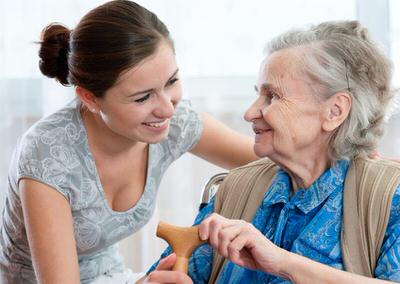Blog Layout
Alternative Communication Methods refers to the tools and strategies used to solve communication challenges

The term, Augmentative and Alternative Communication (AAC), sounds complicated to most people. In simpler terms, AAC refers to the tools and strategies used to solve communication challenges faced by individuals who have problems using oral speech.
Brief History of Augmentative and Alternative Communication (AAC)
The term augmentative communication was coined to refer to communication systems that supplement natural speech as opposed to replacing it. The term alternative was added later as it became evident that for some people, non-speech systems were the only means of communication.
Overview
AAC includes every form of communication other than oral speech. As a result, we all use AAC in a way. Augmentative and alternative communication includes; facial expressions, gestures, symbols, pictures as well as text i.e. all other forms of communication apart from oral speech.
People with speech and/or language problems rely heavily on AAC to communicate. AAC is effective for such individuals because communication can take very many forms. As long as the intention and meaning of one person is understood by the other person, it doesn’t really matter what form of communication is used. AAC operates on this basis.
Although speech is one of the most popular and heavily relied upon modes of communication, it can always be supplemented with other forms when communicating parties have severe speech and/or language problems.
AAC utilizes special augmentative aids like pictures, symbol communication boards, electronic devices, etc. to help people with speech and language problems express themselves, increase their social interaction and feeling of self-worth.
Who Can Use AAC?
AAC can be used by anyone in need of enhancing their communication.
This includes all individuals with congenital conditions like;
- Autism
- Cerebral Palsy
- Intellectual Disability
AAC is also effective for individuals with acquired conditions like;
- Traumatic Brain Injury
- Aphasia
- Amyotrophic Lateral Sclerosis
AAC is effective for individuals with the above conditions as well as anyone else with severe speech-language impairments which make it difficult for such people to be understood.
Types of AAC (Augmentative and Alternative Communication)
There are two types of AAC systems namely; unaided communication systems and aided communication systems.
a. Unaided Communication Systems:
As the name suggests, unaided communication systems rely on someone’s body to communicate/convey messages. Unaided communication systems include; body language, gestures, facial expressions and/or sign language. The systems don’t require any external tools. Body language and facial expressions are informal types of unaided communication systems.
More formalized unaided communication systems include gestural codes i.e. the Amer-lnd which is based on the Plains Indian Sign Language and used mostly with children suffering from severe profound disabilities. The Amer-lnd is also used by adults suffering from a variety of conditions from aphasia to dementia and dysarthria.
Unaided communication systems stand out because they are an efficient way of communicating. For instance, unaided communication systems like sign languages permit expression of countless messages. Another notable benefit of unaided communication systems is; they are available to users throughout.
b. Aided Communication Systems
Aided communication systems require tools and equipment as well as a user’s body. Aided communication methods range from writing to the use of communication books/boards as well as devices which produce voice output (SGF’s or speech generating devices). Aided communication systems include electronic communication aids which allow users to use letters, words, phrases and picture symbols to create messages. Devices which allow aided communication can be programmed to meet the specific needs of a user i.e. specific language needs.
The Role of Speech-Language Pathologists When Working with Persons Who Use AAC
Speech-language pathologists (SLPs) are the best suited medical professionals for helping people who use AAC. SLPs are responsible for establishing AAC techniques and strategies including the development, selection, and prescription of AAC systems and devices.
SLPs perform assessments on individuals with speech and language impairments requiring the use of AAC systems before developing, selecting or prescribing AAC systems and devices. SLPs also assess communication partners as well as the environments where communication occurs.
SLPs use authentic assessment procedures to evaluate as well as determine an individual’s communication skills and needs. SLPs conduct thorough oral peripheral exams meant to identify communication difficulties, an individual's potential to use of natural speech, opportunities for communication, barriers of communication, etc.
SLPs may work alongside other medical professionals to conduct comprehensive assessments. They may also involve loved ones (friends and family members) to help them understand as well as be a part of the prescribed communication solution/s.
Related Posts

By info
•
26 Sep, 2019
Illness, injury, surgery or aging can all affect our ability to function safely and independently within our own homes. An Occupational Therapist can work with you to ensure that your home is safe and functional. After assessing the environment and the activities you do each day, they will make recommendations to reduce the risk of falls or injuries in your home, or to make it easier for you to complete everyday tasks. This might include suggestions such as improving lighting or removing small rugs that could cause tripping, or recommendations for assistive devices or equipment, such as grab bars in the bathroom, to make it easier and safer to transfer to the tub or shower for safer bathing. Falls account for 85% of hospital emergency room admissions for people over the age of 65. For suggestions on how to make your home safer, read Preventing Falls -- Safety in the Home , and arrange to have an Occupational Therapist complete a home safety assessment by contacting our office, or your healthcare provider.

By info
•
26 Sep, 2019
Falls are the main reason older adults lose their independence. There are ways to prevent falls in your home by making simple changes around your home, exercising regularly, having your vision checked and having your medications reviewed by your healthcare provider. You may also benefit from having an Occupational Therapist complete a home safety assessment. Contact Our Office to find out more. Here are some ways to prevent falls and maintain your independence:
Get in Touch
Contact Us
Thank you for contacting us.
We will get back to you as soon as possible.
We will get back to you as soon as possible.
Oops, there was an error sending your message.
Please try again later.
Please try again later.
Our Partners
-

Slide title
Write your caption hereButton -

Slide title
Write your caption hereButton -

Slide title
Write your caption hereButton -

Slide title
Write your caption hereButton -

Slide title
Write your caption hereButton -

Slide title
Write your caption hereButton -

Slide title
Write your caption hereButton
Site Links
Creative Therapy Associates
Our team specializes in speech and language therapy, and occupational therapy for children, adults, and seniors. Our offices are in Thunder Bay, Ontario, but we travel to communities in Northwestern Ontario.
© 2024
All Rights Reserved | Creative Therapy Associates and Creative Therapy Autism Centre
Terms | Privacy | Patient Bill of Rights (PDF)